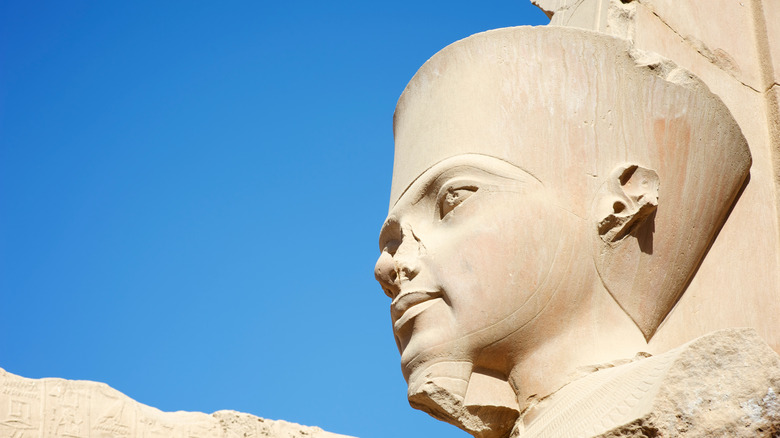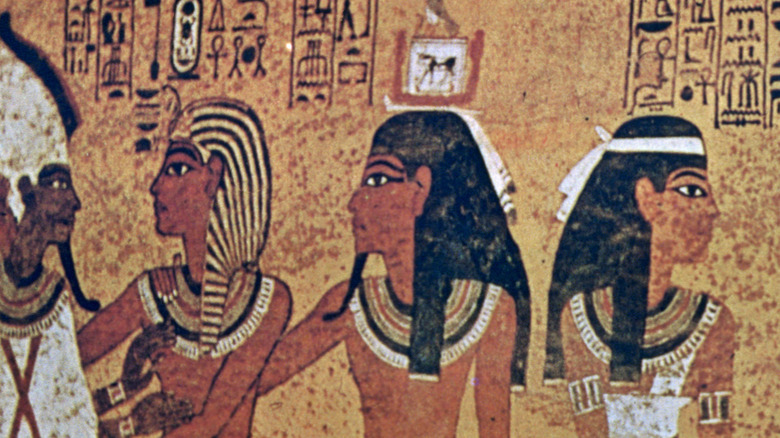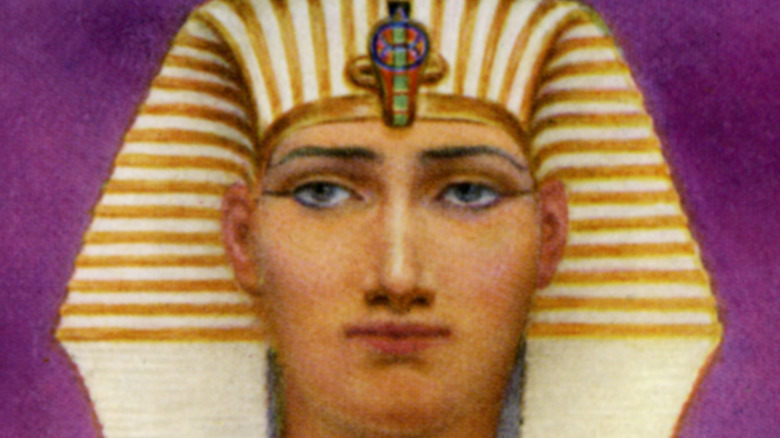Why Did Ancient Egyptian Pharaohs Wear Fake Beards?
The ancient Egyptian empire lasted from 3100 to 30 B.C., around the time of Cleopatra, according to History Hit. Pharaohs, who also functioned as high priests, governed this civilization, led their people through war, and passed legislation, according to National Geographic. Per History, the ancient Egyptians of this time were rather progressive with things like organized labor protests and specialized fields of study within medicine. Ancient Egyptians were also breaking today's traditional gender norms, with Egyptians of both sexes wearing black kohl makeup around their eyes (via History Hit).
There is no shortage of traditions to be found in the lives of the ancient Egyptian pharaohs. For example, some leaders were under 10 years old when they were selected to hold the ruling position, and it was common to marry people in the family to keep the bloodline strong. The famous King Tut, for example, was nine years old when he took the throne, and he married his half sister (via Biography.com).
Dressing their faces
The higher in class an ancient Egyptian was, the more details went into their clothing, and the Egyptian pharaohs were pretty much as high as it gets high in the social hierarchy. Indeed, they were seen as actual living deities of the gods ruling over Egyptian civilization. When thinking of a pharaoh, one might first conjure the image of their iconic cobra headdresses or sandals. Wigs were also extremely common, according to Internet Archaeology, with some Egyptians wearing wigs so heavy or for so long that they would get bald spots on their scalps.
The pharaohs also started fashion trends that would live on for centuries. Around 3000 B.C., ancient Egyptian pharaohs would wear false beards called postiches, which were a sign of royalty (via Britannica). Secured in place with a gold chin strap, these fake metallic beards would continue to be worn until around 1580 B.C.
Defying gender norms
According to Mental Floss, a postich was typically worn for religious purposes. One revered Egyptian pharaoh, Osiris, was also thought to have a fabulous beard of his own, and it was in order to appear in his likeness that the pharaohs donned these postiches (per Egyptian Myths). Osiris, known as the Judge of the Dead, is one of the most influential gods in Egyptian mythology, first-born shortly after the creation of the world alongside with his sister and wife, Isis (via World History).
Although most of the 170 pharaohs to reign were male, the Egyptians were progressive for their time with a rather equitable view of men and women's rights, according to History. For example, men and women often got paid the same wages for the same work. Interestingly, the first female pharaoh of the empire, Hatshepsut, also wore the faux beards while holding her position, as she wanted to maintain the tradition of divinity that had been passed down to her, per Mental Floss.


